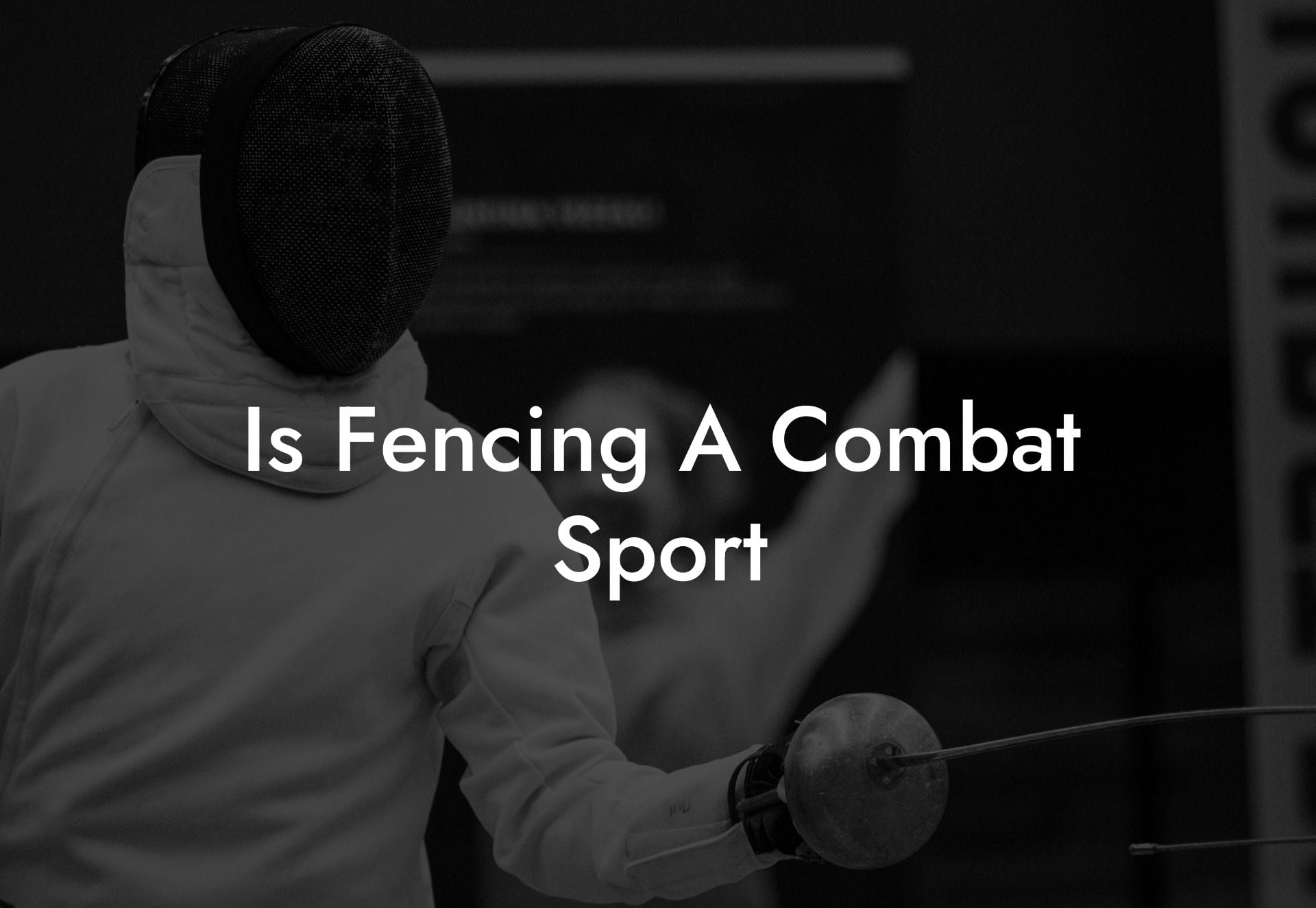Fencing, a sport that holds an air of elegance and sophistication often depicted in movies as a game of noble characters. But have you ever wondered if fencing is more than just an intricate dance of swords? In this article, we will delve deep into the world of fencing and explore whether or not it can be classified as a combat sport.
Is Fencing A Combat Sport Table of Contents
History of Fencing
Fencing has a rich history that dates back to the Renaissance period. It started as a form of self-defense and later evolved into a sport. The earliest known fencing manual, called the "Fior di Battaglia," was written by a 14th-century Italian knight named Fiore dei Liberi. This manual included detailed instructions on how to fight with different weapons, including long swords, daggers, and even unarmed combat techniques.
Comparing Fencing to Other Combat Sports
Combat sports are classified as competitive contact sports where two opponents fight using specific rules and regulations to score points or defeat each other. Examples of combat sports include wrestling, boxing, judo, karate, and mixed martial arts (MMA). To determine if fencing falls under this category, let's compare its characteristics with those of other combat sports.
Strategy and Tactics
- In fencing, just like other combat sports, strategy and tactics play a crucial role in winning a match. A fencer must assess their opponent's strengths and weaknesses and plan their moves accordingly to create advantageous situations.
- Both require quick thinking, adaptability, and excellent decision-making skills.
Physical Requirements
- Fencers, like combat sport athletes, must possess endurance, strength, agility, and flexibility. Fencing demands quick footwork, strong core muscles for balancing and change of direction, and hand-eye coordination for precision attacks.
- Fencing also requires proper conditioning and warm-ups to prevent injuries, similar to other combat sports.
Techniques and Skills
- Both fencing and combat sports have their specialized set of techniques and skills that athletes must master. For instance, fencing has specific offensive and defensive moves like lunges, parries, ripostes, and more, which are crucial to winning a bout.
- Besides hand-to-hand combat, various weapons are used in combat sports. For example, in Kendo, opponents use bamboo swords to strike each other's protective armor, much like how a fencer would aim for their opponent's target area in a bout.
Based on these comparisons, it's clear that fencing shares many attributes with combat sports, but there's still more to explore.
Is Fencing A Combat Sport Example:
Is Fencing a Martial Art?
Another angle to determine if fencing is a combat sport lies in its classification as a martial art. Martial arts are systems of codified practices and traditions of training for combat, either for self-defense or competition. While fencing is often considered a Western martial art (WMA), it differs from traditional martial arts in that its primary focus is on competition rather than self-defense.
However, historical European martial arts (HEMA) are more closely related to combat sports, as they include techniques for fencing, grappling, and armed combat. HEMA practitioners often study antique manuals and reconstruct techniques to adapt to modern self-defense scenarios, making it a closer kin to traditional combat sports.
Fencing can be seen as a borderline combat sport due to its strategic, competitive, and physically demanding nature. Nevertheless, its primary focus on competition rather than self-defense or combat effectiveness sets it apart from traditional combat sports. Regardless, fencing remains an excellent sport for building mental and physical prowess, mastering precision and grace with its age-old techniques.
If you found this article engaging or enlightening, please share with friends and fellow fencing enthusiasts. For more fascinating insights into the world of fencing, explore other articles and guides on Anchorage Fencing Club, where all your fencing questions and curiosities will be answered!













